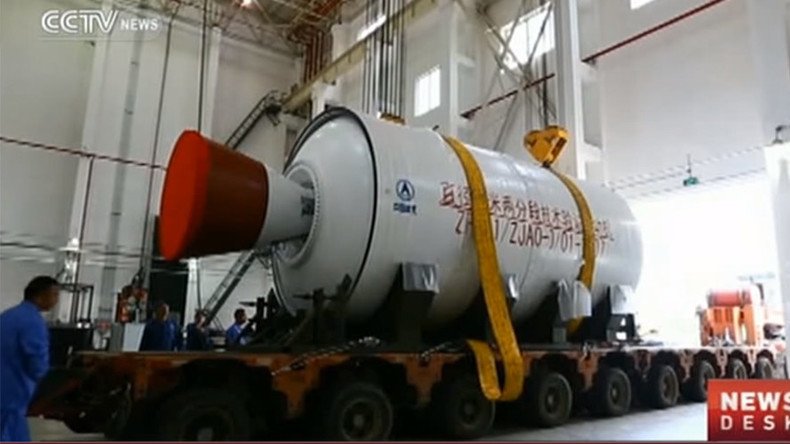China reports rocket engine progress, aims for hybrid spacecraft by 2030

Following a series of breakthroughs, China successfully tested a number of rocket engine technologies this week, bringing the country one step closer to revolutionizing space missions, which Beijing hopes will be used by both Taikonauts and space tourists.
At the start of the week the China Aerospace Science & Technology Corporation (CASC) boasted about the successful completion and testing of the combined “gas generator and turbopump structure for its 500-tonne class LOX/Kerosene liquid engine” to be used to power up heavy launch vehicle, Long March-9 (CZ-9), China Space Report said.
Work on the development of the new engine and CZ-9 heavy rocket launcher has been ongoing for four years. Research has been carried out by the Academy of Launch Vehicle Technology (CALT) and the Academy of Aerospace Propulsion Technology (AAPT).
China launches next-gen carrier rocket from new space center (PHOTOS, VIDEOS) https://t.co/eY9SpvdqCK
— RT (@RT_com) June 25, 2016
The first launch of the Long March-9 is anticipated to take place around 2030. The CZ-9 rocket will be 100 meters long and up to nine meters in diameter, with a lift-off thrust of 5,200 to 5,500 tons.
It will carry a load of 130 tons to Low Earth Orbit (LEO) equal to what NASA is aiming for with its Space Launch System (SLS), which could blast off for the first time as early as 2018 with an initial test payload of 70 tons. When completed China hopes to use the rocket beyond Earth’s orbit and fly to the Moon and eventually Mars.
Following Monday’s announcement, the next day, CASC announced that the Academy of Aerospace Solid Propulsion Technology (AASPT) had successfully carried out test ignition of its largest solid-fuel rocket motor. The three meters in diameter motor ran for 100 seconds after ignition. The new engine will also be used for deep-space exploration.
Besides the announced breakthroughs in engine design, China is developing a perspective hybrid reusable space vehicle that will combine three different kinds of engine technologies, reported CCTV.
Namely, the new ship that is being developed as a “combination powered aircraft” will rely on an indigenous turbine, ramjet and rocket engines to power the spaceship in different phases of the flight into space. Such technology, China hopes will make orbit traveling that will span between dozens to hundreds of kilometers from the Earth much cheaper.
The idea envisions that the combination of engines will allow the aircraft to take off like an airplane and land at an airport facility, saving costs by getting rid of the expenses associated with the space launch facility.
Scientists believe that they are capable of producing an aircraft that will take off at low speed using a high-performance aviation turbine engine or air-breathing rocket engine. After reaching a certain speed, supersonic combustion ramjet engine will kick allowing the vehicle to reach the upper atmosphere where the rocket engine will be used to break through Earth’s gravity.
“We have made a long-term plan of taking about three to five years to master the key technologies, and significantly improve the capability of the spacecraft during the application,” said Zhang Yong, China Aerospace Science & Technology Corp, as quoted by Xinhua. “We aim to implement the technology in suborbital flight and orbital insertion by 2030.”













